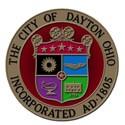From our point of view, the most important factor to Southwest success is that it carefully selects the type of markets they enter. Southwest typically chose only very dense, short and medium haul market, which allow Southwest to exploit economies of density and maintain a fleet comprised of a single aircraft type, thus minimizing maintenance, spare parts inventory and pilots training costs. In entering new markets, Southwest chooses airports that are readily accessible, rather than large, crowded international airport, which saves average of 15% to 25% of average the flight time and thus, saves operating costs.
Southwest selects new markets where air travel has often dwindled with too few flights as a result of high fares and poor services. When they enter the market, they price against ground transportation as much as against existing air services. Fares drop by as much as 80%, while number of passengers increases sharply. They can usually quadruple or quintuple the number of passengers on a particular route.
At the very least, they can double it. This action often triggers a price war, which in turn benefits customers and increases traffic in that area, and expands the market even further. Early in the life of the entry, load factors are high and demand outpaces supply. As it adds more services, eventually supply and demand start to balance, average load factor stabilize at about 65%.
We analyzed the pros and cons for each option. At first glance, from those qualitative facts it seems that Dayton market is the most attractive one. However, market entry has to meet the condition, that is, expected post-entry profits must exceed the sunk costs. Therefore, the post-entry profitability plays the biggest role here. Profitability is determined by three major factors: market demand, low costs, and post-entry competition.
First, let us look...


